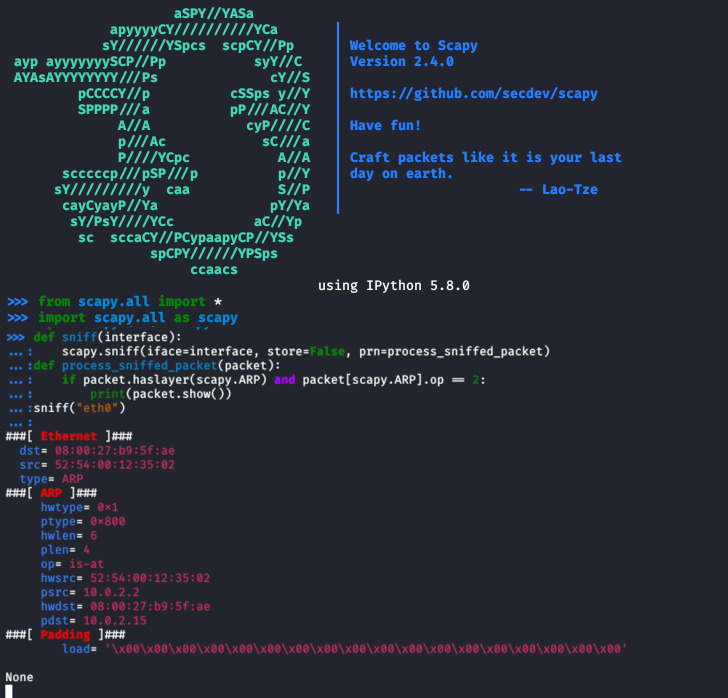


See what interface Scapy will use by default by looking at the iface value: localhost:~ packetgeek$ scapy Run scapy from the terminal and run the conf command. If you have multiple network interfaces on your computer, you might have to double check which interface Scapy will use by default. I highly recommend install IPython in your scapy environment as it makes interactive mode much more enjoyable! pip3 install ipython SY/////////y caa S//P | - Sebastien Chabal P////YCpc A//A | We are in France, we say Skappee. SY//////YSpcs scpCY//Pp | Welcome to ScapyĪyp ayyyyyyySCP//Pp syY//C | Version 2.4.2 Once Scapy is installed, you should be able to run it from the terminal, just like we did with Python, and get something that looks like this: localhost:~ packetgeek$ scapy Check out the Scapy installation guides to find instructions and installer packages relevant to your platform. There are multiple ways to install Scapy depending on your platform. If you are running Windows or for some other reason do not have Python installed already, go to the Python download page and grab the installer for your platform.

Type " help ", " copyright ", " credits " or " license " for more information. You should see something like this: localhost:~ packetgeek$ python3 To check, open a terminal and type python3 or python. If you're using a Mac or running some version of *nix you probably already have Python 2 (and maybe even Python 3) installed. Scapy was originally written for Python 2, but since the 2.4 release (March 2018), you can now use Scapy with Python 3.4+! I will prefer Python 3 in examples but will also include notes about big differences between each python version and Scapy if they exist.


 0 kommentar(er)
0 kommentar(er)
